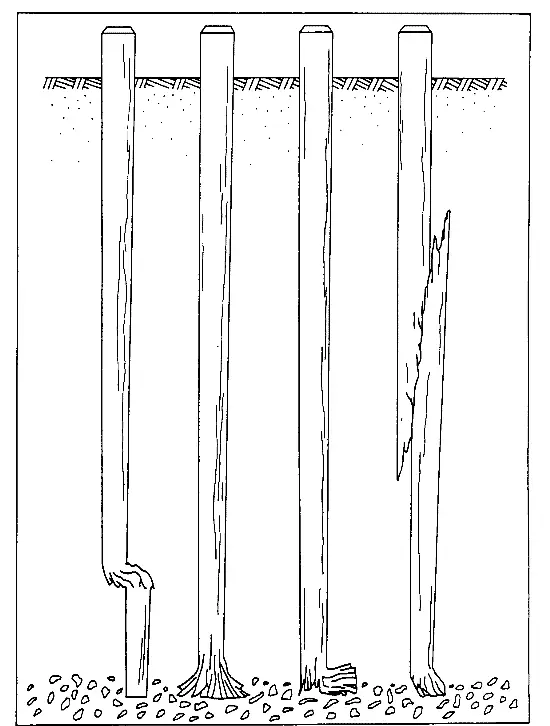When Timber Piles are used
Timber piles are advantageous in wet and compressive soils to build light structures. Cost is reduced in timber piling. Piles are generally used as friction piles. Timber pile are mostly square or circular shaped.
Advantages of Timber Piles
Timber piles are used in many developed countries for its ease of construction. Some advantages of timber piles are listed below.
- It is cheap and economical.
- Piles can be made longer by bonding each other.
- Piles can be placed quickly. So it reduces overall time.
- No heavy material or experienced labor is needed for timber piling.
- As timber is an elastic material, it can be used in places where there is a possibility of side friction.
Disadvantages of Timber Piles
Timber piling is not handy for heavy construction. The disadvantages of timber piling are as follows.
- It can be affected by insects or salt water.
- It can not be used for filled soil.
- It is very costly to place pile caps for deep excavation where sub-soil water level is very low.
- The joint between timber piles is weak, so it can not be used effectively in places where long piling is required.
- Load bearing capacity is low.
- Timber piles are very hard to place in hard ground surface.
